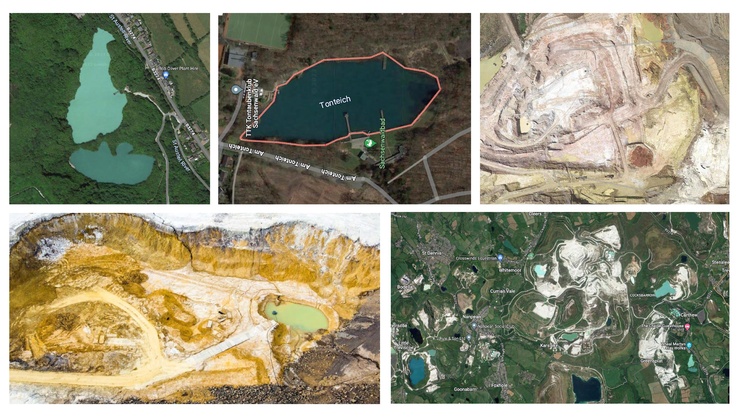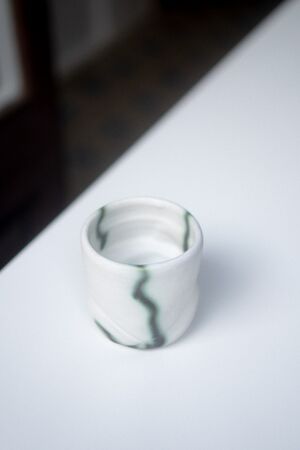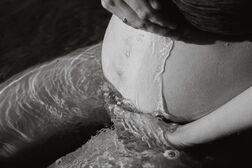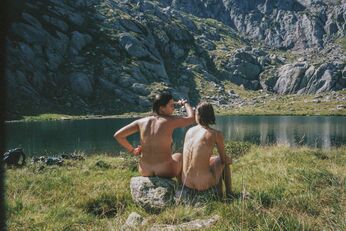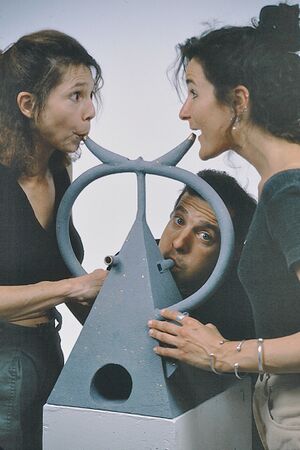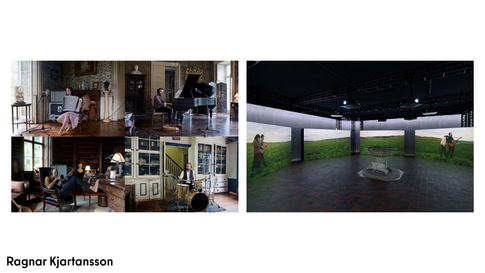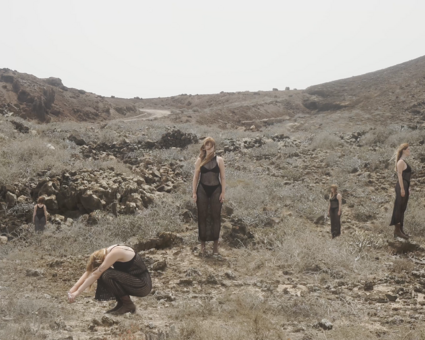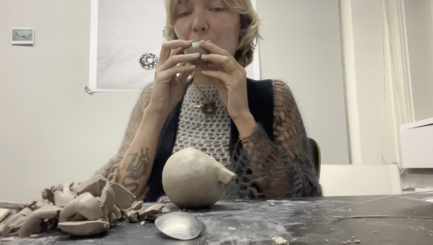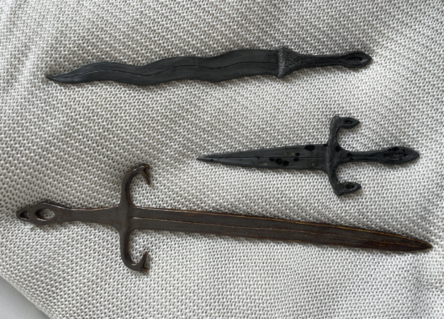SteveSuggestsClaraThesis23: Difference between revisions
| (2 intermediate revisions by the same user not shown) | |||
| Line 1: | Line 1: | ||
= '''''BODIES OF WATER''''' = | = '''''BODIES OF WATER''''' = | ||
[[File:Brainstorm Clara Franke.pdf|center|frameless|743x743px]] | [[File:Brainstorm Clara Franke.pdf|center|frameless|743x743px]] | ||
'''[Steve suggests: the intro is really clear and I think the story telling mode of address is working very well indeed. 'lessons from' is a great way to frame the three principal elements of your project. I like the way your personal biography and experience grounds the text, whilst you explain historical context and your own practice. Please continue to draw on those resources. | |||
I know you have plenty of ideas for stories to follow, but I have a commission for you: please write me a short story about 'solar punk'.; what does that mean for you? It's a new idea to me which my kid introduced me to by showing me this ad: https://www.youtube.com/watch?v=MS-sJQkr0H4 which is rather wonderfully made. ''But'' what does solar punk mean to Clara?]. Anyways, you have established a personal, informed mode of address and a form – small interrelated sections which relate to each other. Looking forward to chatting about how to make the thesis writing process help your project tmrw'''] | |||
== '''THESIS OUTLINE''' == | == '''THESIS OUTLINE''' == | ||
| Line 112: | Line 115: | ||
A dramatic scream for help, followed by rhythmic bouncing of the little body combined with a calming humming or lullaby, possibly for both sides to cope with the outburst of emotions. | A dramatic scream for help, followed by rhythmic bouncing of the little body combined with a calming humming or lullaby, possibly for both sides to cope with the outburst of emotions. | ||
So, my sister gave birth to a little girl called Svea, and I began observing family members humming and singing to this little creature to calm her down. '''[<I suggest a change here. No need to say 'as mentioned above'; let the story do its work]''' Making up their own songs and melodies, that by repetition seem to work more and more. I spend a year living in Albuquerque, New Mexico, when I was 16. Here I first lived with a young mother called Samantha and her 3 year old daughter Stella. Samanthas lullaby of choice had become "Three Little Birds" by Bob Marley, and her daughter would request this song over and over again, not getting tired of her mother holding her closely while humming the famous melody. A beautiful reminder of the calming power of our voices and music in general. | |||
| Line 154: | Line 157: | ||
''Sweet dreams of pleasant streams'' | ''Sweet dreams of pleasant streams'' | ||
'''[Steve: can you give the proposal and the thesis separate pages please?>>]''' | |||
Latest revision as of 11:27, 6 December 2023
BODIES OF WATER
[Steve suggests: the intro is really clear and I think the story telling mode of address is working very well indeed. 'lessons from' is a great way to frame the three principal elements of your project. I like the way your personal biography and experience grounds the text, whilst you explain historical context and your own practice. Please continue to draw on those resources. I know you have plenty of ideas for stories to follow, but I have a commission for you: please write me a short story about 'solar punk'.; what does that mean for you? It's a new idea to me which my kid introduced me to by showing me this ad: https://www.youtube.com/watch?v=MS-sJQkr0H4 which is rather wonderfully made. But what does solar punk mean to Clara?]. Anyways, you have established a personal, informed mode of address and a form – small interrelated sections which relate to each other. Looking forward to chatting about how to make the thesis writing process help your project tmrw]
THESIS OUTLINE
Introduction
Body of Water
Fill the abyss we have left
Order’s returning
A solarpunk view on the relationship between clay(mining) and humanity.
A conversation with the matter which hosts at least 30% of us in houses of brick and cob, and which has been my growing obsession.
Aiming to visualize and unravel the complexity of clay mining and usage, I am creating ceramic instruments as a research medium.
On the one hand extracted, reshaped, burned, it is impossible to return clay into it’s natural form.
On the other hand clay quarries leave behind an abyss. Borrow pits then often fill with water, turn into excavation lakes, turn into wildlife habitats and are used for recreational human entertainment.
A calming thought experiment of nature returning no matter how much our species may take from it.
We are dependent on nature, but nature not on us.
Chapter 1/ Lessons from Ceramics
Immersing my hands in the soft body of soil, I forget about the concept of time until my back painfully reminds me of the duration of my doing.
I intuitively stroke the material until the desired smoothness of the surface and shape is achieved. An extension of my own body and mind, each object recognisable as my hands’ collaboration with the natural material.
I started working with clay during the last year of my undergraduate degree at the Minerva Art Academy in Groningen. Making and failing plenty, my usually impatient self would be pinned to the ceramics studio for many hours at a time.
The small room almost hidden behind the cantine hadn't really caught my attention in the 3 years leading up to this point, possibly due to the dislike of the oddly unmotivated tutor that some of my friends were expressing.
Not exactly sure what switched, but once I started I never stopped and became increasingly obsessed.
I went on to take a turntable course in Barcelona, impatiently waiting until I could go back to my class in Gràcia, a lively neighborhood towards the mountains. The class was led by the calm handed, attractive, tattooed teacher Antonio, his music choice always hitting the spot. It started by watching him in the almost sensual act of centering a 500 gram piece of clay, a slurping soundscape while continuously changing the shape from a phallic tower to a flat blob. Once I was able to center and pull up the walls of a vessel with his help, it was time to wait until the piece was, what is called, leather hard.
“Un poco más!” Would be one of his typical comments in the next step of the process; trimming. Tapping on the shape I was working on, he was listening to the sound of the hollow body. Once the sound became drum-like, hollow, it was time to stop cutting down and leave the little creation to dry and wait for its next step.
Baking, glazing, baking, and after 4 weeks in total I would finally hold my first own cups. Oh, the joy. Of course every piece but one would be gifted proudly to family members for Christmas a month later.
That last one, my favorite, was a cup accidentally twirled around by the spinning table. A beautifully accidental, asymmetrical mistake, reminding me of its organic origin and handmade qualities.
Back in the Netherlands, I once glazed 20 cups accidentally with non-water resistant glaze for my friend’s coffee shop. I continued learning a lot and 1 year later built up the courage to pick up the molding cups again to try to reglaze them, scared that the weeks it took me to create them were for nothing after all. But I managed!
Glaze stuck to the kiln, completely melted pieces that I accidentally put in the wrong temperature kiln and many more mistakes would follow. Many explainable, many frustrating, but all full of lessons.
More cups, vases, plates, swords, crowns, and now instruments became part of my proud collection of ceramic creations. I can hardly use a mass produced ceramic piece with pleasure anymore, knowing the bliss I feel when holding one made with my, my friends or my sisters hands.
It feels addictive, the workshop luring me in every time I pass it on the second floor of our university.
A playground where knowledge exchange is the norm between all playmates.
Collectively understanding the matter in greater detail every time. Running into my fellow students Bart and Laura-Lize I can usually expect a new experiment with natural glazing they have just done being explained and shown to me with glowing, child-like excitement in their eyes.
It is never about showing off, it is always coming from that excited playfulness and the knowing that the other will feel the same and exchange volcanic rocks powder, ashes, found soil and other toys back.
An odd combination of productiveness, which I crave in a partially unhealthy amount, mixed with a meditative sense and yet a feeling of procrastination, not knowing why I exactly keep creating artifacts, that the world definitely is not in great need of.
The more I read the more I understand the import and various role clay has played for humanity. We have used it to build housing, create instruments, create vessels for our food, create beautiful sculptures, apply it on our bodies as masks or even eat it (German Heilerde or Kyrgyz Gulboto).
Always feeling that there is more to tell with this practice other than simply creating beautiful objects and gifts for my loved ones, this project is an aim to explore the potential of clay to truly interact with its origin.
´
2/ Lessons from Lakes
Growing up in Hamburg's suburb Bergedorf, many summer days were spent and winter dips taken at its various lakes that were within cycling distance of my parents house.
I generally am a person who enjoys immersing themselves in water in moments of flaring up anxiety. A dip into a body of water almost guarantees to calm my racing heart and intrusive thoughts. Most chances I get I aim to motivate to leave closing behind and sprint into waters encountered. One of the most freeing, bonding, calming, exciting things I can imagine is a swim in beloved company.
In July of this year my sister and I went to the one closest to our childhood home to take photos of her as she was pregnant with her daughter Svea.
Watching and photographing my pregnant, naked sister, she started washing her belly with the water we were once bathed in as toddlers.
Then she started singing, not knowing that I was now actually filming her serenading her unborn child.
Half a year later I am revisiting this beautiful memory, with new information added to the context; This lake is actually a remnant of human extraction. The excavation lake was created between 1978 and 1982, when sand was needed for the extension of a closeby highway. Then the low ground water of Bergedorf filled it to become what is now the See(lake) Hinterm Horn.
Also all of the other lakes in this area that have shaped so many of my childhood memories have a similar history. The Boberger See and Eichbaumsee are past sand pits. Then there is one, that my father spent many of his childhood days at, as he grew up in the same area of the city; the Tonteich- Clay Lake. This lake formed after the local brickyard opened in 1875 and started extracting clay here. The factory burned down and never reopened, but the borrow pit stayed and slowly filled with water over the years.
One interesting fact here is the acidity of the water, as the clay bed of the lake created a scenery, that is not inhabitable for many fish and mosquitos for example.
I continued searching for the history of the lakes I have been visiting most in Germany and the Netherlands, realizing that almost all of them are excavation lakes; residues of surface mining.
Along my deep dive I sent an email to the company Goerg & Schneider, which is the company that has supplied our school with clay. On their website they mention the act of recultivation and how the process of clay extraction can be done in the most reciprocal way.
But how sustainable and reciprocal can a process be when something is taken that can not be returned?
The duality of this topic becomes more and more present.
Ultimately I wish to unravel the emotional disconnect that has grown between consumers and goods. My aim is to promote ideas of a symbiocene, a reciprocal relationship between humans and the land we inhabit, in which nature will ultimately outlive ourselves and we will become part of it ourselves again, once our bodies disintegrate into soil.
Chapter 3/ Lessons from lullabies
What do we intuitively do when calming down a crying infant?
A dramatic scream for help, followed by rhythmic bouncing of the little body combined with a calming humming or lullaby, possibly for both sides to cope with the outburst of emotions.
So, my sister gave birth to a little girl called Svea, and I began observing family members humming and singing to this little creature to calm her down. [>]
PROPOSAL
A musical collaborative performance with ceramic instruments
What?
I will create two video pieces and an interactive installation that center around a ceramic musical altar.
The first short film of approximately 5-10 minutes will be documenting the creation of ceramic instruments from the extraction of the clay, to the shaping, burning, glazing and final instruments.
The second video will be a one-shot performative short film of approximately 15 minutes in which the instruments will be used by myself and another musician on the location where the clay has been extracted. This film will center around a “musical altar” consisting of the self made ceramic instruments.
Lastly the ceramic piece itself will be exhibited, so it can be interacted with by the visitors.
Here are some visual insights into my search for references and my first try outs.
How?
Step 0: Continue reading in different directions such as object oriented ontology and examples for reciprocal relationships between humans and land (Currently reading Braiding Sweetgrass by Robin Wall Kimmerer) in order to specify my research.
Step 1: Make ceramic instrument trials. Possible instruments include; flute, marimba/xylophone, hanging plates/chimes, shaker, bells, water whistle, drum, guiro. I will document the process through film and photography. Film this whole process
Step 2: Start collecting clay and try to create instruments with such. Also film this whole process.
Step 3: Create video performances in collaboration with my close friend and collaborator in many ways Mila. This can be filmed in a location where I collected clay.
Step 4: Possibly create one meditative loop song that I will create a music video to.
Why do you want to make it?
Coming from a multidisciplinary background I have devised a way to combine my interests and skills in lens based work, ceramics, and musical performance.
One of my learnings of the past 5 years spend in art school has been the appreciation of objects from the perspective of a crafter, understanding and appreciating the virgin material and the path it had to take in order to take on a new shape and be usable to humans.
This project gives me the chance to visualise this process of gratitude focussed production methods, with an underlying anti-capitalistic thought, as it visualises the emotional disconnect that has grown between consumers and goods. My aim is to promote ideas of a symbiocene and reciprocal relationships between humans and the land we inhabit.
The musical part of this project comes from many influences throughout my upbringing in a very musical family and my ongoing collaborations as a lens based artist with musicians, as right now with my friend Mila Meijer. Together we are currently producing several music videos for the EP of the duo MIEL that she is part of. As this project in currently ongoing next to my studies and I am greatly enjoying working with her it felt natural to bring her influence on me into this project as well.
Having felt very touched by Ragnar Kjartansson's works "The Visitors" and "Death is Elsewhere", the want to include a musical aspect to my graduation project became stronger.
Who can help you?
Musically I will have support through my sister(music therapist) and mama(choir conductor) and my friend Mila(musician and frequent collaborator).
When it comes to ceramics, I am reaching out to two fellow WDKA students; Laura, who is learning a lot about natural glazes at the moment and Dori, who is already working with ceramic instruments. I am also reaching out to artists that work with clay that they have collected themselves. The potterer Claußen in Brunsbüttel works with clay out of the Wadden sea and the recent WDKA graduate Rink Schelling works with clay from Zeeland.
I am also planning to visit the Soundlab at the ceramics center EKWC, close to Tilburg. Possibly support can be found there.
Relationship to previous practice
These applied disciplines have been in my practice for some time. I grew up in a very musical family and embraced my inner stage pig through flute playing, classical singing, ballet and contemporary dance.
Now I sometimes create little tracks with my mother and her wild selection of instruments at home. Her choir has become my second family, underlining my idea of music as a community builder as it has build one for me since birth.
Over the last years I have increasingly worked with musicians in my lens based practice as well. Usually making music videos or taking images at performances. In the last few years one main collaborator has been Mila or rather the duo MIEL in that sense. Currently working on several music videos for their upcoming album, we are slowly turning into a trio, where visual arts merge into the process of musical creation.
Ceramics came into my life around 2 years ago, having taken a course in Barcelona at the end of 2021. The obsession has been growing steadily, making functionable ceramics, but also more sculptural ones such as crowns and swords. Instrument making is a new one to me. Ceramics came into my life around 2 years ago, having taken a course in Barcelona at the end of 2021. The obsession has been growing steadily, making functionable ceramics, but also more sculptural ones such as crowns and swords. Instrument making is a new one to me.
Another constant in my practice has been to continuously accumulate new skills in crafts. This practice of learning how to craft clothing from virgin and upcycled material or clay objects for daily usage for example, has strengthened my anti-capitalistic ideas of consumption. Crafting has taught me to enjoy slow processes and cherish the pride and energy I carry with objects created by myself or people I feel any sort of relation to.
Inspiring friends to also create or create side by side has also been a fulfilling aspect of these learnings.
Friendships and community, acts of socialising have been present in most of my work. From my photobook on the community that I lived in in Groningen(The ORKZ), to my photographic and film work centering around friendships and shared experiences. Another example for that is the short film I have made on my friend Amber.
Relationship to larger context
A big spark towards this project has come from Ragnar Kjartanssons works “The Visitors” and “Death is Elsewhere”. An artist I have found inspiring, that is using interactivity and live music in an installation is Nevin Aladag. Her “Music Room” installation focuses on the idea of historical, recreational music rooms. The performance piece by Wang Lu and Polly Apfelbaum called “The Sound of Ceramics” should also be mentioned. It brings together vocals and using ceramic pieces hanging in the space as instruments.
Instrument builders that have caught my eye so far have been Harry Partch (working with microtonal scales), Susan Rawcliffe (focus on hispanic inspired flutes) and Marie Picard (ceramic instruments in playful animal designs) and Gemma Luz Bosch (installations with ceramic instruments).
In ceramics work I have been also looking more into the work of Mel Arsenault, who is creating organically shaped altars from clay.
Musicians that I find inspiring are Erykah Badu, Marc Rebillet, Laura Misch (loop machine-multi-instrumentalist) and the song “Give peace a chance” by Yoko Ono and John Lennon that originated in their bed-in protests for peace. This could be a potential visual reference.
When it comes to the research, ideas such as object-oriented ontology and ecofeminism play a big role.
Currently two books that I am reading are also of great importance to base my ideas on human-nature relationships that aim to become symbiotic and reciprocal; Robin Kimmerer (Braiding Sweetgrass) and Alice Vincent (Rootbound).
Workflow/timetable
Now-February: Research through reading and making instruments
February-May: Video experimentation with the instruments
May-June: Editing and experimenting with medium for presentation (film installation/physical objects/interactivity/live performance/print images)
Steve suggests: this is a transclusion of text above
BODIES OF WATER
[Steve suggests: the intro is really clear and I think the story telling mode of address is working very well indeed. 'lessons from' is a great way to frame the three principal elements of your project. I like the way your personal biography and experience grounds the text, whilst you explain historical context and your own practice. Please continue to draw on those resources. I know you have plenty of ideas for stories to follow, but I have a commission for you: please write me a short story about 'solar punk'.; what does that mean for you? It's a new idea to me which my kid introduced me to by showing me this ad: https://www.youtube.com/watch?v=MS-sJQkr0H4 which is rather wonderfully made. But what does solar punk mean to Clara?]. Anyways, you have established a personal, informed mode of address and a form – small interrelated sections which relate to each other. Looking forward to chatting about how to make the thesis writing process help your project tmrw]
THESIS OUTLINE
Introduction
Body of Water
Fill the abyss we have left
Order’s returning
A solarpunk view on the relationship between clay(mining) and humanity.
A conversation with the matter which hosts at least 30% of us in houses of brick and cob, and which has been my growing obsession.
Aiming to visualize and unravel the complexity of clay mining and usage, I am creating ceramic instruments as a research medium.
On the one hand extracted, reshaped, burned, it is impossible to return clay into it’s natural form.
On the other hand clay quarries leave behind an abyss. Borrow pits then often fill with water, turn into excavation lakes, turn into wildlife habitats and are used for recreational human entertainment.
A calming thought experiment of nature returning no matter how much our species may take from it.
We are dependent on nature, but nature not on us.
Chapter 1/ Lessons from Ceramics
Immersing my hands in the soft body of soil, I forget about the concept of time until my back painfully reminds me of the duration of my doing.
I intuitively stroke the material until the desired smoothness of the surface and shape is achieved. An extension of my own body and mind, each object recognisable as my hands’ collaboration with the natural material.
I started working with clay during the last year of my undergraduate degree at the Minerva Art Academy in Groningen. Making and failing plenty, my usually impatient self would be pinned to the ceramics studio for many hours at a time.
The small room almost hidden behind the cantine hadn't really caught my attention in the 3 years leading up to this point, possibly due to the dislike of the oddly unmotivated tutor that some of my friends were expressing.
Not exactly sure what switched, but once I started I never stopped and became increasingly obsessed.
I went on to take a turntable course in Barcelona, impatiently waiting until I could go back to my class in Gràcia, a lively neighborhood towards the mountains. The class was led by the calm handed, attractive, tattooed teacher Antonio, his music choice always hitting the spot. It started by watching him in the almost sensual act of centering a 500 gram piece of clay, a slurping soundscape while continuously changing the shape from a phallic tower to a flat blob. Once I was able to center and pull up the walls of a vessel with his help, it was time to wait until the piece was, what is called, leather hard.
“Un poco más!” Would be one of his typical comments in the next step of the process; trimming. Tapping on the shape I was working on, he was listening to the sound of the hollow body. Once the sound became drum-like, hollow, it was time to stop cutting down and leave the little creation to dry and wait for its next step.
Baking, glazing, baking, and after 4 weeks in total I would finally hold my first own cups. Oh, the joy. Of course every piece but one would be gifted proudly to family members for Christmas a month later.
That last one, my favorite, was a cup accidentally twirled around by the spinning table. A beautifully accidental, asymmetrical mistake, reminding me of its organic origin and handmade qualities.
Back in the Netherlands, I once glazed 20 cups accidentally with non-water resistant glaze for my friend’s coffee shop. I continued learning a lot and 1 year later built up the courage to pick up the molding cups again to try to reglaze them, scared that the weeks it took me to create them were for nothing after all. But I managed!
Glaze stuck to the kiln, completely melted pieces that I accidentally put in the wrong temperature kiln and many more mistakes would follow. Many explainable, many frustrating, but all full of lessons.
More cups, vases, plates, swords, crowns, and now instruments became part of my proud collection of ceramic creations. I can hardly use a mass produced ceramic piece with pleasure anymore, knowing the bliss I feel when holding one made with my, my friends or my sisters hands.
It feels addictive, the workshop luring me in every time I pass it on the second floor of our university.
A playground where knowledge exchange is the norm between all playmates.
Collectively understanding the matter in greater detail every time. Running into my fellow students Bart and Laura-Lize I can usually expect a new experiment with natural glazing they have just done being explained and shown to me with glowing, child-like excitement in their eyes.
It is never about showing off, it is always coming from that excited playfulness and the knowing that the other will feel the same and exchange volcanic rocks powder, ashes, found soil and other toys back.
An odd combination of productiveness, which I crave in a partially unhealthy amount, mixed with a meditative sense and yet a feeling of procrastination, not knowing why I exactly keep creating artifacts, that the world definitely is not in great need of.
The more I read the more I understand the import and various role clay has played for humanity. We have used it to build housing, create instruments, create vessels for our food, create beautiful sculptures, apply it on our bodies as masks or even eat it (German Heilerde or Kyrgyz Gulboto).
Always feeling that there is more to tell with this practice other than simply creating beautiful objects and gifts for my loved ones, this project is an aim to explore the potential of clay to truly interact with its origin.
´
2/ Lessons from Lakes
Growing up in Hamburg's suburb Bergedorf, many summer days were spent and winter dips taken at its various lakes that were within cycling distance of my parents house.
I generally am a person who enjoys immersing themselves in water in moments of flaring up anxiety. A dip into a body of water almost guarantees to calm my racing heart and intrusive thoughts. Most chances I get I aim to motivate to leave closing behind and sprint into waters encountered. One of the most freeing, bonding, calming, exciting things I can imagine is a swim in beloved company.
In July of this year my sister and I went to the one closest to our childhood home to take photos of her as she was pregnant with her daughter Svea.
Watching and photographing my pregnant, naked sister, she started washing her belly with the water we were once bathed in as toddlers.
Then she started singing, not knowing that I was now actually filming her serenading her unborn child.
Half a year later I am revisiting this beautiful memory, with new information added to the context; This lake is actually a remnant of human extraction. The excavation lake was created between 1978 and 1982, when sand was needed for the extension of a closeby highway. Then the low ground water of Bergedorf filled it to become what is now the See(lake) Hinterm Horn.
Also all of the other lakes in this area that have shaped so many of my childhood memories have a similar history. The Boberger See and Eichbaumsee are past sand pits. Then there is one, that my father spent many of his childhood days at, as he grew up in the same area of the city; the Tonteich- Clay Lake. This lake formed after the local brickyard opened in 1875 and started extracting clay here. The factory burned down and never reopened, but the borrow pit stayed and slowly filled with water over the years.
One interesting fact here is the acidity of the water, as the clay bed of the lake created a scenery, that is not inhabitable for many fish and mosquitos for example.
I continued searching for the history of the lakes I have been visiting most in Germany and the Netherlands, realizing that almost all of them are excavation lakes; residues of surface mining.
Along my deep dive I sent an email to the company Goerg & Schneider, which is the company that has supplied our school with clay. On their website they mention the act of recultivation and how the process of clay extraction can be done in the most reciprocal way.
But how sustainable and reciprocal can a process be when something is taken that can not be returned?
The duality of this topic becomes more and more present.
Ultimately I wish to unravel the emotional disconnect that has grown between consumers and goods. My aim is to promote ideas of a symbiocene, a reciprocal relationship between humans and the land we inhabit, in which nature will ultimately outlive ourselves and we will become part of it ourselves again, once our bodies disintegrate into soil.
Chapter 3/ Lessons from lullabies
What do we intuitively do when calming down a crying infant?
A dramatic scream for help, followed by rhythmic bouncing of the little body combined with a calming humming or lullaby, possibly for both sides to cope with the outburst of emotions.
So, my sister gave birth to a little girl called Svea, and I began observing family members humming and singing to this little creature to calm her down. [>]
PROPOSAL
A musical collaborative performance with ceramic instruments
What?
I will create two video pieces and an interactive installation that center around a ceramic musical altar.
The first short film of approximately 5-10 minutes will be documenting the creation of ceramic instruments from the extraction of the clay, to the shaping, burning, glazing and final instruments.
The second video will be a one-shot performative short film of approximately 15 minutes in which the instruments will be used by myself and another musician on the location where the clay has been extracted. This film will center around a “musical altar” consisting of the self made ceramic instruments.
Lastly the ceramic piece itself will be exhibited, so it can be interacted with by the visitors.
Here are some visual insights into my search for references and my first try outs.
How?
Step 0: Continue reading in different directions such as object oriented ontology and examples for reciprocal relationships between humans and land (Currently reading Braiding Sweetgrass by Robin Wall Kimmerer) in order to specify my research.
Step 1: Make ceramic instrument trials. Possible instruments include; flute, marimba/xylophone, hanging plates/chimes, shaker, bells, water whistle, drum, guiro. I will document the process through film and photography. Film this whole process
Step 2: Start collecting clay and try to create instruments with such. Also film this whole process.
Step 3: Create video performances in collaboration with my close friend and collaborator in many ways Mila. This can be filmed in a location where I collected clay.
Step 4: Possibly create one meditative loop song that I will create a music video to.
Why do you want to make it?
Coming from a multidisciplinary background I have devised a way to combine my interests and skills in lens based work, ceramics, and musical performance.
One of my learnings of the past 5 years spend in art school has been the appreciation of objects from the perspective of a crafter, understanding and appreciating the virgin material and the path it had to take in order to take on a new shape and be usable to humans.
This project gives me the chance to visualise this process of gratitude focussed production methods, with an underlying anti-capitalistic thought, as it visualises the emotional disconnect that has grown between consumers and goods. My aim is to promote ideas of a symbiocene and reciprocal relationships between humans and the land we inhabit.
The musical part of this project comes from many influences throughout my upbringing in a very musical family and my ongoing collaborations as a lens based artist with musicians, as right now with my friend Mila Meijer. Together we are currently producing several music videos for the EP of the duo MIEL that she is part of. As this project in currently ongoing next to my studies and I am greatly enjoying working with her it felt natural to bring her influence on me into this project as well.
Having felt very touched by Ragnar Kjartansson's works "The Visitors" and "Death is Elsewhere", the want to include a musical aspect to my graduation project became stronger.
Who can help you?
Musically I will have support through my sister(music therapist) and mama(choir conductor) and my friend Mila(musician and frequent collaborator).
When it comes to ceramics, I am reaching out to two fellow WDKA students; Laura, who is learning a lot about natural glazes at the moment and Dori, who is already working with ceramic instruments. I am also reaching out to artists that work with clay that they have collected themselves. The potterer Claußen in Brunsbüttel works with clay out of the Wadden sea and the recent WDKA graduate Rink Schelling works with clay from Zeeland.
I am also planning to visit the Soundlab at the ceramics center EKWC, close to Tilburg. Possibly support can be found there.
Relationship to previous practice
These applied disciplines have been in my practice for some time. I grew up in a very musical family and embraced my inner stage pig through flute playing, classical singing, ballet and contemporary dance.
Now I sometimes create little tracks with my mother and her wild selection of instruments at home. Her choir has become my second family, underlining my idea of music as a community builder as it has build one for me since birth.
Over the last years I have increasingly worked with musicians in my lens based practice as well. Usually making music videos or taking images at performances. In the last few years one main collaborator has been Mila or rather the duo MIEL in that sense. Currently working on several music videos for their upcoming album, we are slowly turning into a trio, where visual arts merge into the process of musical creation.
Ceramics came into my life around 2 years ago, having taken a course in Barcelona at the end of 2021. The obsession has been growing steadily, making functionable ceramics, but also more sculptural ones such as crowns and swords. Instrument making is a new one to me. Ceramics came into my life around 2 years ago, having taken a course in Barcelona at the end of 2021. The obsession has been growing steadily, making functionable ceramics, but also more sculptural ones such as crowns and swords. Instrument making is a new one to me.
Another constant in my practice has been to continuously accumulate new skills in crafts. This practice of learning how to craft clothing from virgin and upcycled material or clay objects for daily usage for example, has strengthened my anti-capitalistic ideas of consumption. Crafting has taught me to enjoy slow processes and cherish the pride and energy I carry with objects created by myself or people I feel any sort of relation to.
Inspiring friends to also create or create side by side has also been a fulfilling aspect of these learnings.
Friendships and community, acts of socialising have been present in most of my work. From my photobook on the community that I lived in in Groningen(The ORKZ), to my photographic and film work centering around friendships and shared experiences. Another example for that is the short film I have made on my friend Amber.
Relationship to larger context
A big spark towards this project has come from Ragnar Kjartanssons works “The Visitors” and “Death is Elsewhere”. An artist I have found inspiring, that is using interactivity and live music in an installation is Nevin Aladag. Her “Music Room” installation focuses on the idea of historical, recreational music rooms. The performance piece by Wang Lu and Polly Apfelbaum called “The Sound of Ceramics” should also be mentioned. It brings together vocals and using ceramic pieces hanging in the space as instruments.
Instrument builders that have caught my eye so far have been Harry Partch (working with microtonal scales), Susan Rawcliffe (focus on hispanic inspired flutes) and Marie Picard (ceramic instruments in playful animal designs) and Gemma Luz Bosch (installations with ceramic instruments).
In ceramics work I have been also looking more into the work of Mel Arsenault, who is creating organically shaped altars from clay.
Musicians that I find inspiring are Erykah Badu, Marc Rebillet, Laura Misch (loop machine-multi-instrumentalist) and the song “Give peace a chance” by Yoko Ono and John Lennon that originated in their bed-in protests for peace. This could be a potential visual reference.
When it comes to the research, ideas such as object-oriented ontology and ecofeminism play a big role.
Currently two books that I am reading are also of great importance to base my ideas on human-nature relationships that aim to become symbiotic and reciprocal; Robin Kimmerer (Braiding Sweetgrass) and Alice Vincent (Rootbound).
Workflow/timetable
Now-February: Research through reading and making instruments
February-May: Video experimentation with the instruments
May-June: Editing and experimenting with medium for presentation (film installation/physical objects/interactivity/live performance/print images)
Steve suggests: this is a transclusion of text above
Template loop detected: SteveSuggestsClaraThesis23

